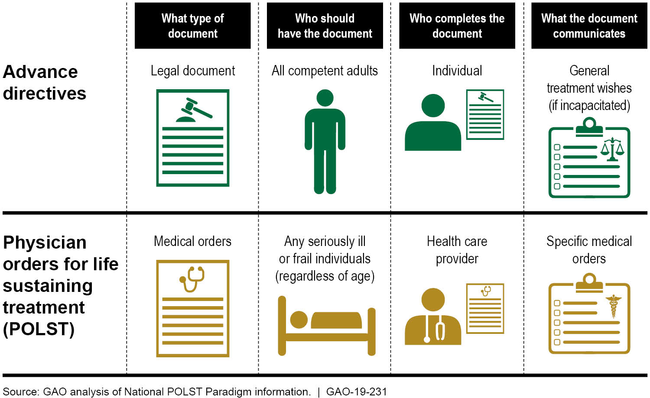Advance Care Planning:
Selected States’ Efforts to Educate and Address Access Challenges
In a medical emergency, do you want CPR, a feeding tube, or other life-sustaining treatment?
You can plan for what you want (or don’t want) using documents such as:
Advance directives—living wills and health care power of attorney—to document your health care wishes
Physician orders for life-sustaining treatment to document end-of-life treatment orders if you’re seriously ill
If you have these documents, doctors and emergency techs may not know they exist or be able to find them. And many people don’t have them. Some states are educating health care providers and patients and maintaining document registries to address these issues. Some advance planning documents, like this one for end-of-life care, are brightly colored to make them easier to identify.
Advance care planning documents—including advance directives and physician orders for life-sustaining treatment (POLST)—allow individuals to express their wishes for end-of-life care. Advance directives, which include living wills and health care power of attorney, provide direction regarding care when an individual becomes incapacitated. POLST documents are appropriate for seriously ill individuals whose health status indicates the need for medical orders to be documented in their medical records.
Read more of the story: Advance Care Planning: Selected States’ Efforts to Educate and Address Access Challenges | U.S. GAO
